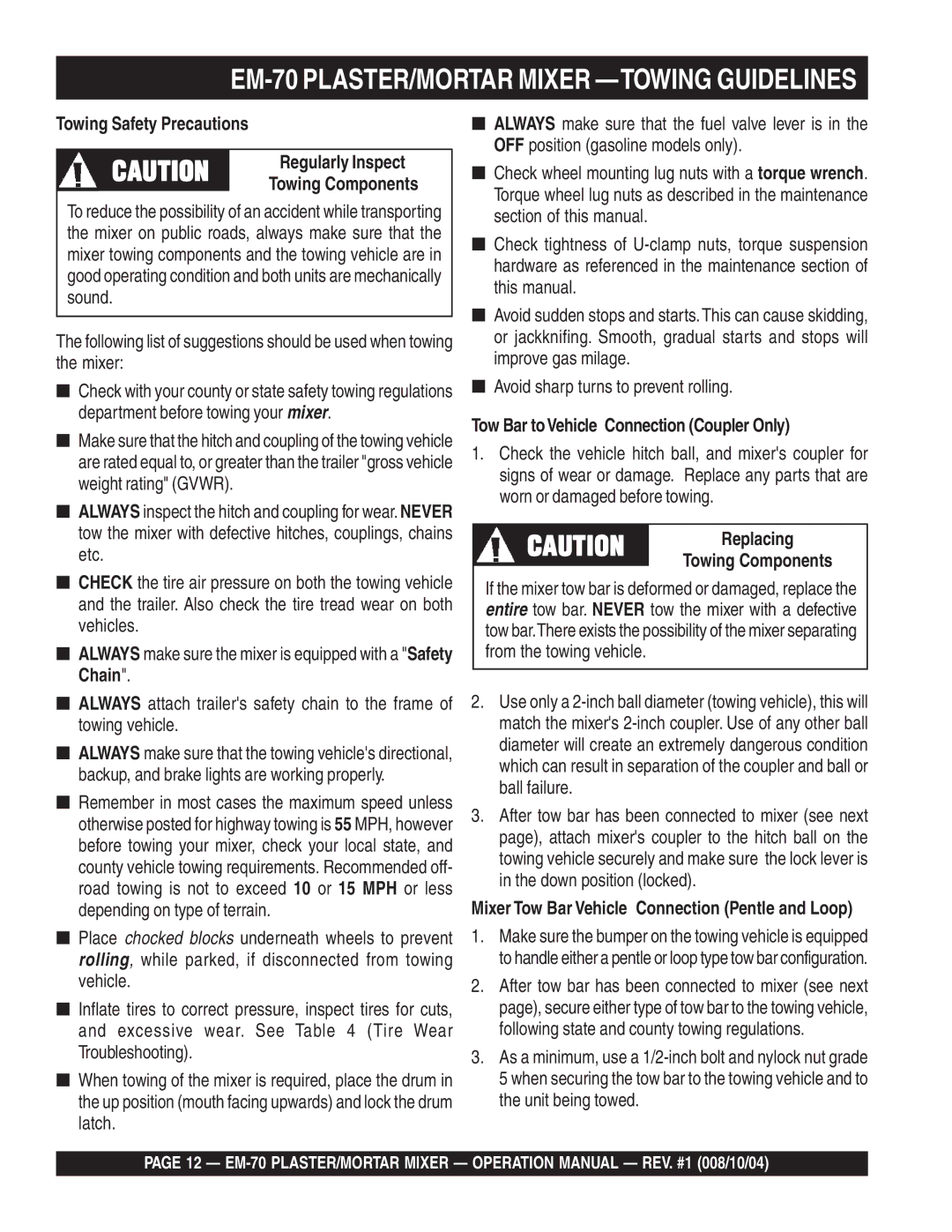EM-70S, EM-70P specifications
The Multiquip EM-70P and EM-70S are two robust and versatile electric generators designed to provide reliable power for various applications, ranging from construction sites to special events. Both models are renowned for their performance, durability, and efficiency, catering to the needs of contractors, event organizers, and outdoor enthusiasts alike.One of the standout features of the EM-70P and EM-70S is their powerful engine. The EM-70P is equipped with a 7,000-watt gasoline engine, while the EM-70S comes with a 7,000-watt propane engine. This dual-fuel capability of the EM-70S not only enhances flexibility but also promotes cleaner and more efficient energy consumption. Both generators feature a heavy-duty steel frame that ensures maximum durability and protection against the rigors of job sites.
Technologically, these generators are designed with advanced noise reduction features. The low-noise operation makes them suitable for use in noise-sensitive environments, such as residential areas and events, allowing users to work or host gatherings without disturbing neighbors. Additionally, the EM-70P and EM-70S are equipped with an easy-to-read control panel, featuring circuit breakers and outlets that include multiple 120V and 240V options, ensuring compatibility with a wide range of tools and equipment.
Another notable characteristic of the EM-70P and EM-70S is their portability. Both models come with sturdy wheels and a foldable handle, making them easy to transport on job sites or during events. Their compact size does not compromise power output, as they can easily handle the demands of multiple tools and devices simultaneously.
Safety is also prioritized in the design of these generators. They feature a low-oil shutdown system which automatically turns off the engine when oil levels are critically low, preventing potential damage. Furthermore, the generators are designed to withstand harsh weather conditions, providing peace of mind to users who require dependable power in any environment.
In summary, the Multiquip EM-70P and EM-70S generators combine powerful performance, noise-reduction technology, user-friendly controls, and safety features. Whether you need a reliable power source for construction, outdoor events, or emergency backup, these generators present an ideal solution that meets diverse power needs efficiently and effectively.

